Keyword gap analysis is one of the most effective ways to ensure your website ranks higher in search engine results.
But what exactly is keyword gap analysis, and why is it so important for your SEO strategy?
Keyword gap analysis is the process of comparing your website’s keywords with those of your competitors to identify opportunities and gaps.
By understanding which keywords your competitors are ranking for—and you are not—you can uncover hidden opportunities to attract more organic traffic to your site.
In this post, we’ll discuss keyword gap analysis, its importance, and how to help you perform an effective keyword gap analysis.
So, without any further ado, let’s get started.

Table Of Contents
1 What is Keyword Gap Analysis?
Keyword gap analysis is a strategic SEO process that compares the keywords your website ranks for with those of your competitors.
The goal is to identify gaps—keywords that competitors rank for, but you do not. By uncovering these gaps, you can target new keywords and optimize your content to improve your search engine rankings and attract more organic traffic.
Importance of Keyword Gap Analysis
By analyzing the keywords your competitors are targeting, you can find opportunities to attract traffic you may have overlooked.
Knowing which keywords your competitors rank for helps you understand their strategy and strengths, allowing you to better position your content.
By filling in the keyword gaps, you can create or optimize content to address these gaps, improving your chances of ranking higher in search results.
2 How to Perform Keyword Gap Analysis
Let us now discuss how to perform a keyword gap analysis.
2.1 Identify Competitors for Your Analysis
Identifying competitors is the first step in performing an effective keyword gap analysis. The process involves determining which websites or businesses you are competing against for search engine visibility.
Start by considering your direct competitors—those that offer similar products or services and target the same audience. You can identify these competitors by searching for your primary keywords on search engines and noting the websites that consistently appear in the top results.
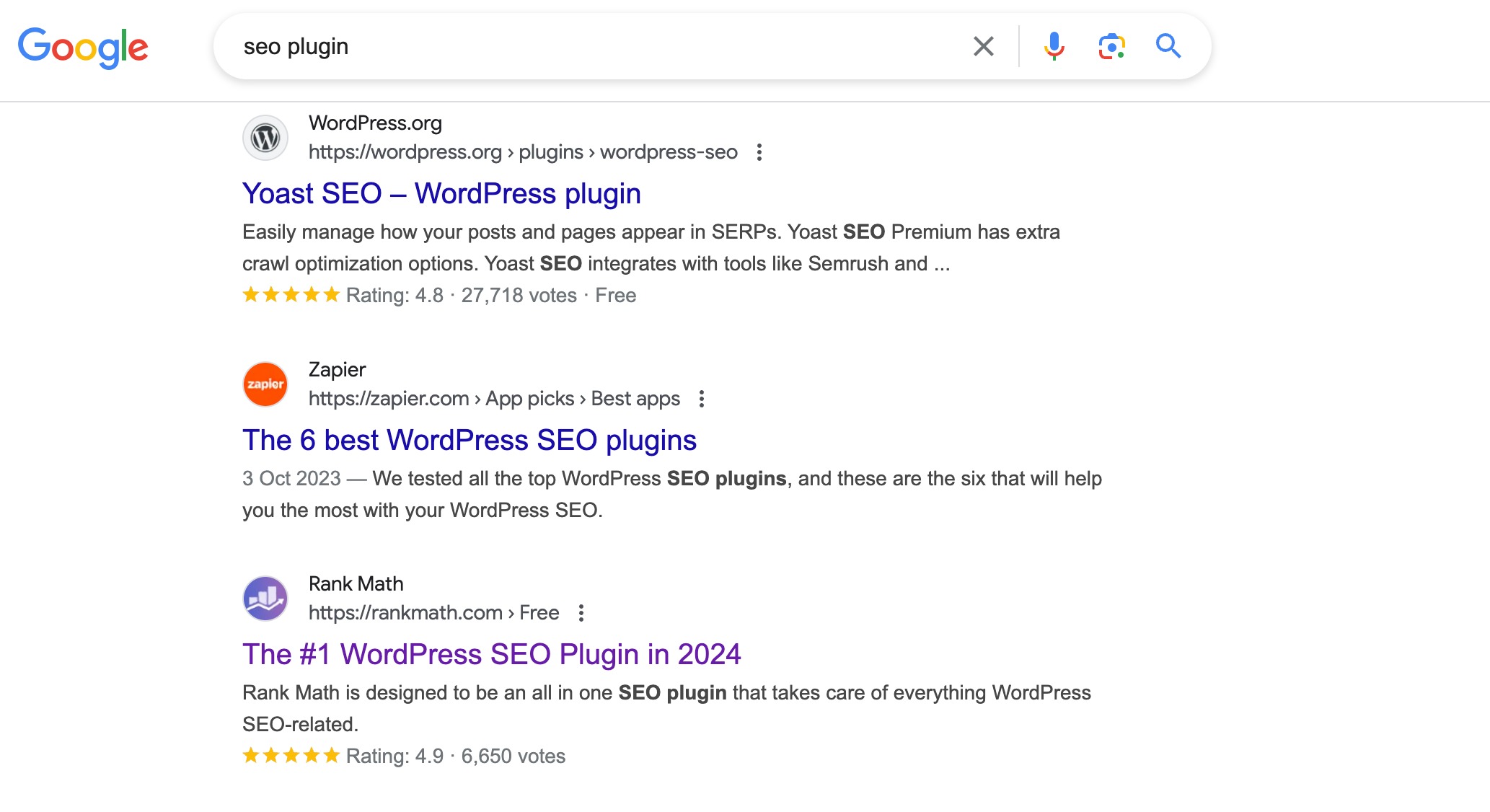
Additionally, SEO tools like Ahrefs and Semrush can be used to find competitors based on keyword overlap.
Don’t overlook indirect competitors, who may not offer identical products or services but still target your potential customers.
2.2 Find Keyword Gaps
Finding your keyword gaps involves comparing the keywords you currently rank for with those your competitors rank for, but you do not.
This process can reveal opportunities where you might be missing out on valuable search traffic.
Start by compiling a list of keywords your website ranks for, using tools like Google Keyword Planner or your preferred SEO software. Next, gather the keyword data for your main competitors.
In the Google Keyword Planner, navigate to the Discover new keywords section. Here, you have the option to Start with a website.
Enter the URL of one of your competitors, ensuring you select the option to use the entire site or a specific page, depending on your needs.
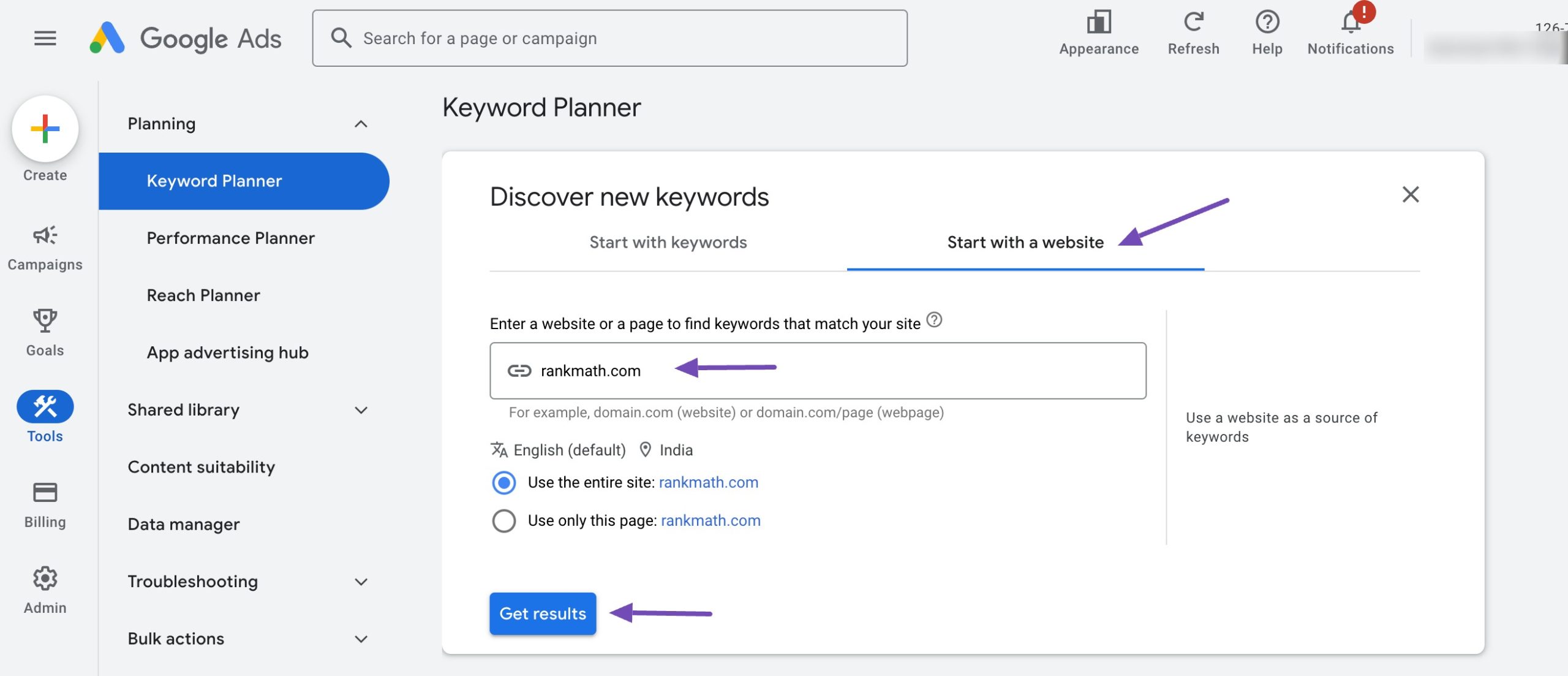
Google Keyword Planner will then generate a list of keywords for which the entered site ranks. This list includes valuable information such as search volumes, competition levels, and keyword trends.
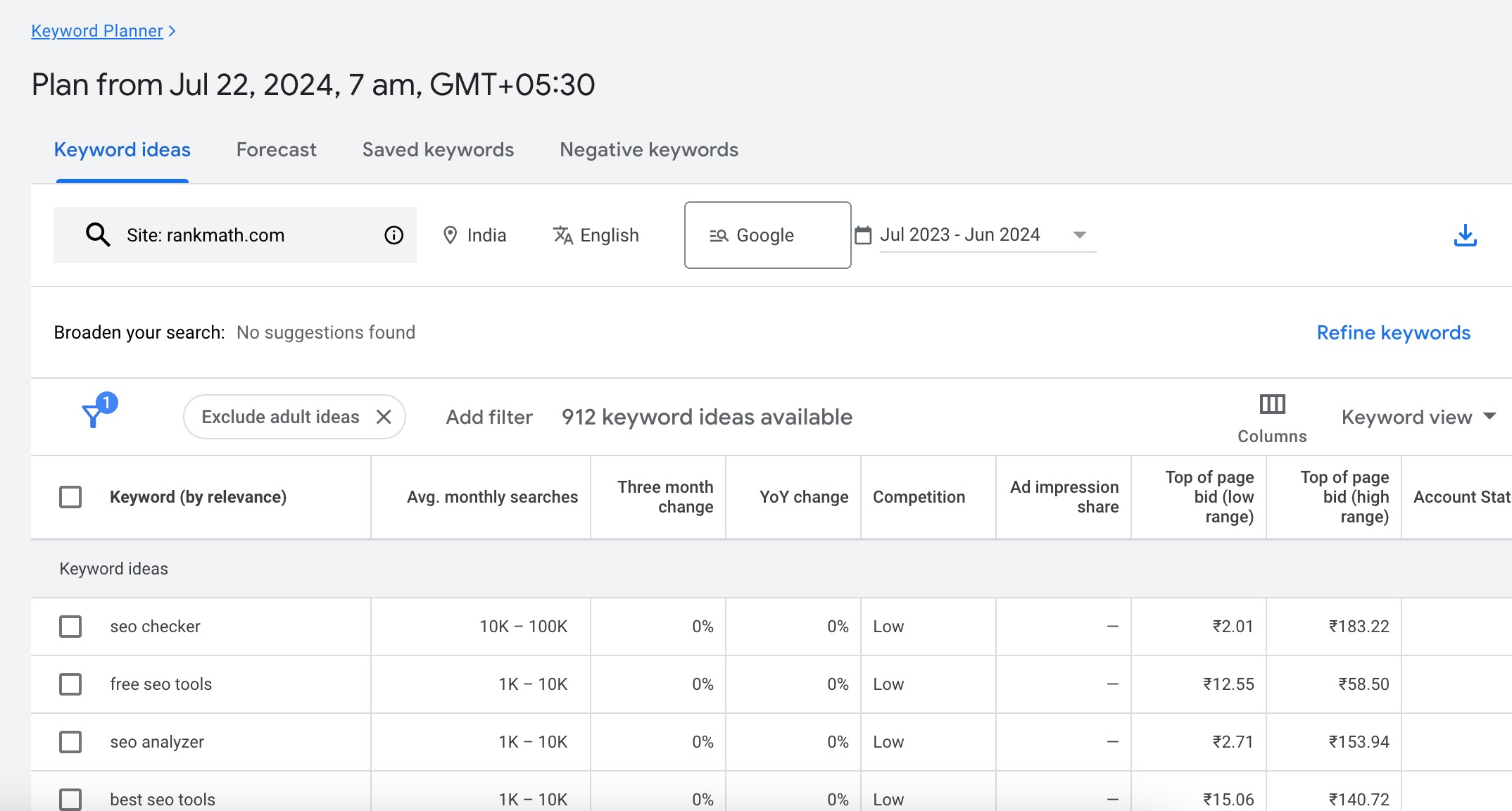
By analyzing this data, you can discover the keywords driving traffic to your competitor’s site. Repeat this process with other competitors to compile a comprehensive list of potential keywords.
This method not only reveals high-value keywords but also provides insight into your competitors’ SEO strategies, enabling you to refine your own keyword targeting and content creation efforts.
You can use Semrush’s Keyword Gap tool to identify the keyword gaps.
Enter your domain and up to four competitors’ domains. Select your location and click Compare.
You will then see a report that shows how your keywords overlap with your competitors’ keywords, highlighting your top opportunities. Scroll down to view the table listing all the competitors and how their keyword profiles intersect with yours.
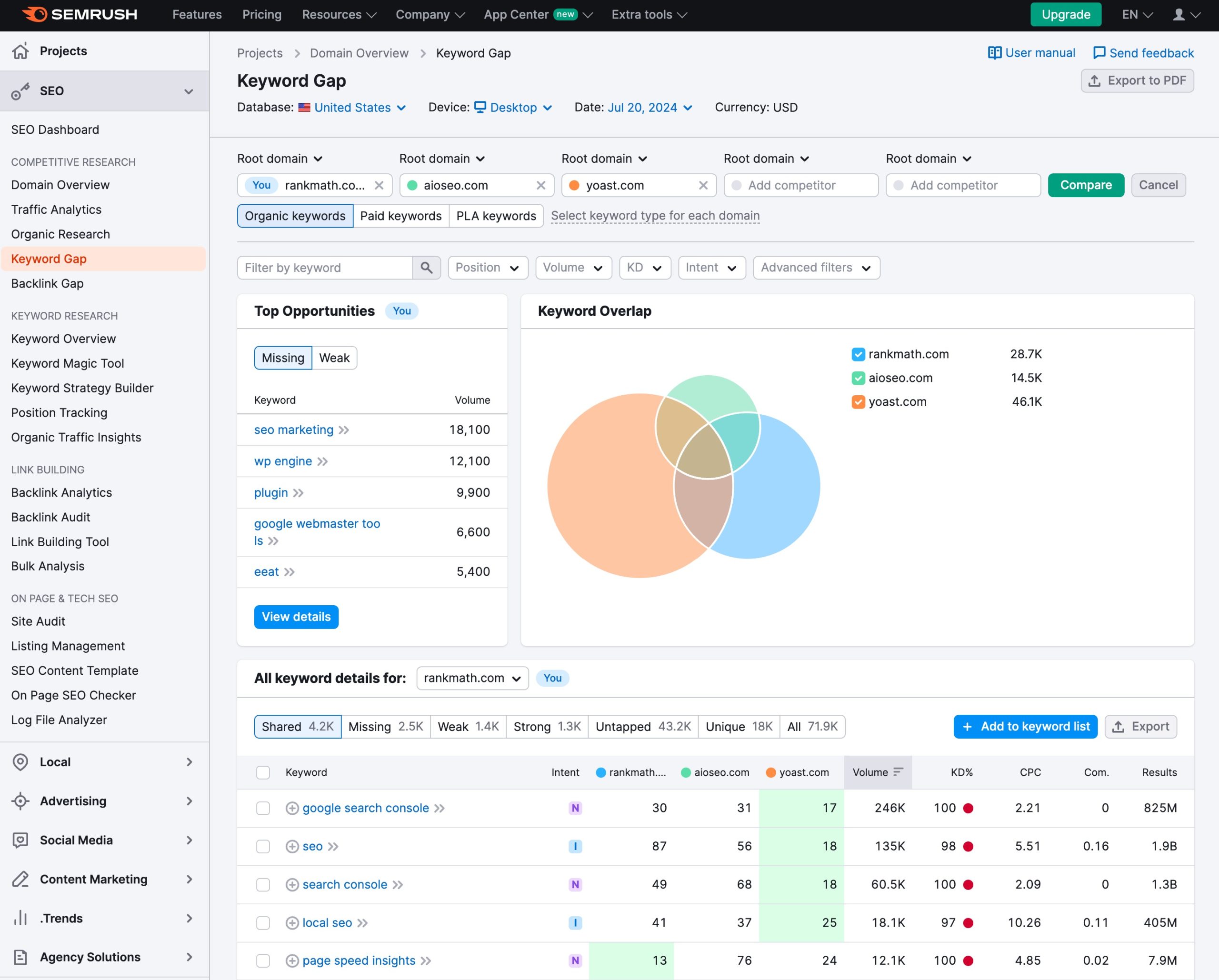
Export the list of missing keywords to a PDF file for further analysis.
2.3 Analyze Your Keyword Gaps
The next step is to analyze the keyword gaps that you found through either Google Keyword Planner or Semrush’s Keyword Gap tool.
Analyze the list of keywords to understand your website’s keyword performance. Google Analytics provides insights into how audience find your site, which pages are the most popular, and the behavior of visitors coming through specific keywords.
Google Search Console, on the other hand, offers a detailed view of your site’s search traffic and performance, highlighting the keywords that generate impressions and clicks.
Look for keywords that your competitors rank for but are missing from your site’s keyword list. These gaps represent potential opportunities to attract more organic traffic.
For instance, if you run an online bookstore and your competitor ranks for best mystery novels and upcoming book releases, but you do not, these are valuable keywords to target.
2.4 Group Keywords
Grouping keywords is an essential step in keyword gap analysis, which allows you to organize and prioritize keywords based on various factors such as relevance, search volume, and competition.
Categorize by Topic or Theme
Start by grouping keywords into broad categories or themes related to your business.
For instance, if you run a fitness blog, you can have categories such as workout routines, nutrition tips, yoga, and mental health. This helps you see which areas you are well-covered in and which need more content or optimization.
Segment by Search Intent
Next, segment your keywords by search intent. Search intent can generally be divided into four types: informational, navigational, transactional, and commercial investigation.
For instance, informational keywords like how to lose weight require different content than transactional keywords like buy protein powder.
Rank Math PRO’s Search Intent feature ensures your content matches the right search intent, boosting your ranking potential. Click the Show Intent button next to your primary keyword to instantly see its intent.
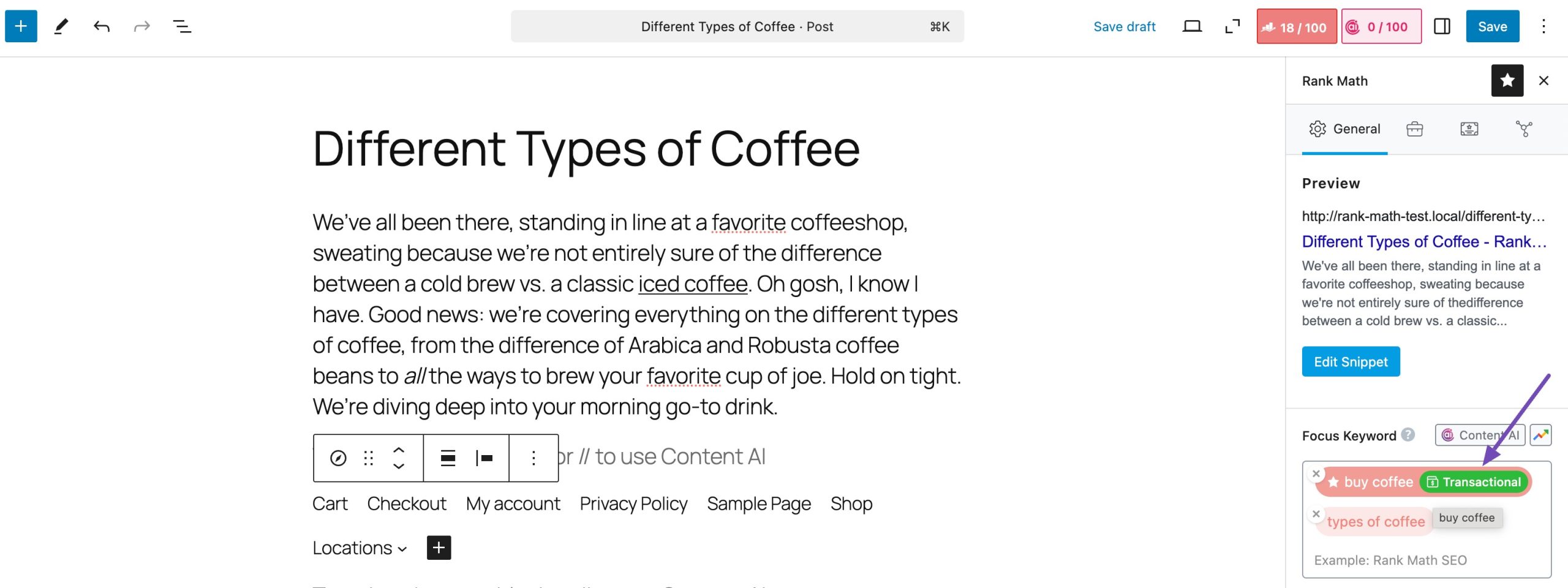
RankBot then helps you efficiently classify related keywords with similar user intent, ensuring your content is structured and relevant to your audience’s needs.

Prioritize by Search Volume and Competition
Within each category, prioritize keywords based on search volume and competition. High-volume, low-competition keywords are usually the most valuable, as they offer significant traffic potential with less difficulty in ranking.
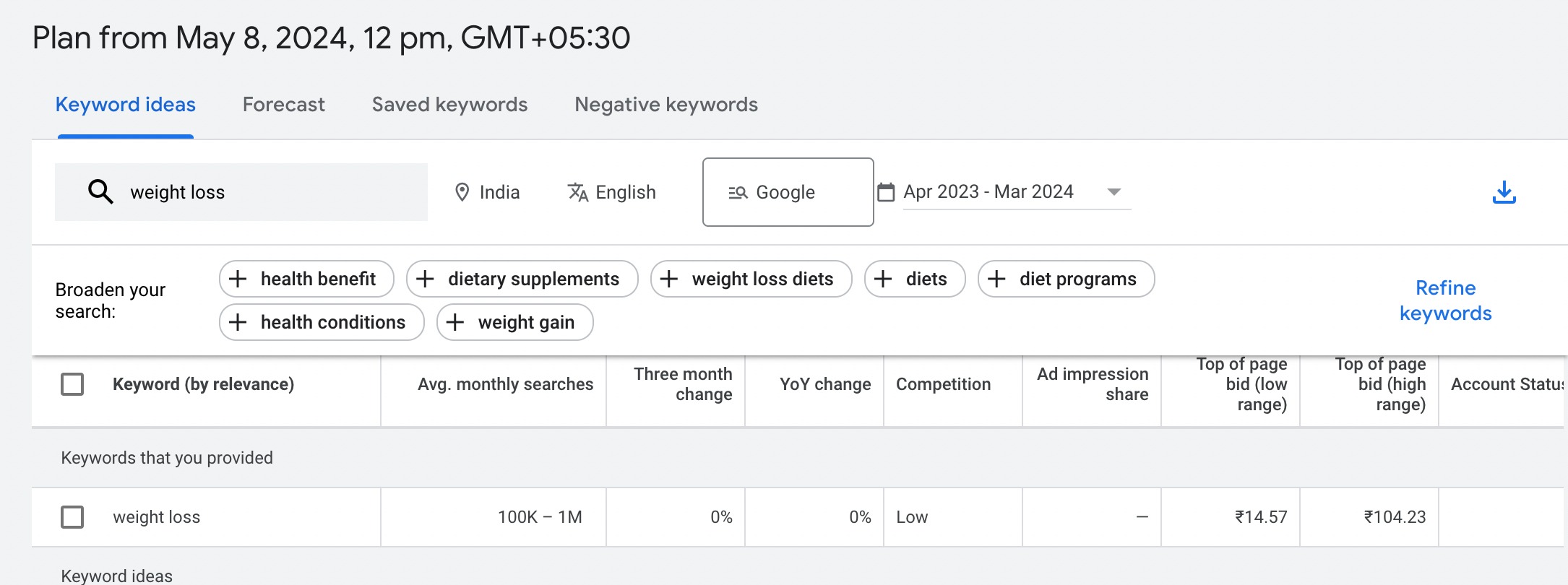
2.4 Develop a Strategy to Address Keyword Gaps
Begin by prioritizing the keywords you’ve identified based on their relevance to your business, search volume, and competition level. Keywords that are highly relevant to your products or services have a substantial search volume, and low to moderate competition should be at the top of your list.
Create content around these prioritized keyword gaps. This involves producing high-quality, valuable content that addresses the needs and interests of your target audience.
When creating new content, follow best practices for SEO optimization. Ensure that your target keywords are included in strategic locations such as the title, headings, meta descriptions, and throughout the content in a natural and reader-friendly manner.
You can use Rank Math’s Content AI feature to create and optimize your content. And if you’re curious about how other marketers are approaching content and keyword strategy with AI, check out our Future of Search Report — it’s packed with real-world insights from over 700 WordPress SEO professionals.
Enhancing on-page SEO elements is another key component of your strategy.
Updating existing content to target new keywords is also necessary. Review your older posts and identify opportunities to incorporate the new keywords you’re targeting.
This can be done by adding new sections, updating outdated information, or reworking the content to make it more comprehensive.
2.5 Monitor Your Rankings
Effective keyword gap analysis doesn’t end with identifying and targeting new keywords. Continuous monitoring and measuring of results are essential to ensure that your SEO efforts are paying off.
Begin by tracking the performance of the new keywords you’ve targeted. This involves keeping an eye on where these keywords rank in search engine results and how much traffic they are driving to your site.
You can use Rank Math Analytics that provides you a brief overview of your top winning keywords, top losing keywords as well as a separate tab for the top winning & losing keywords that you’ve added to the Rank Tracker.
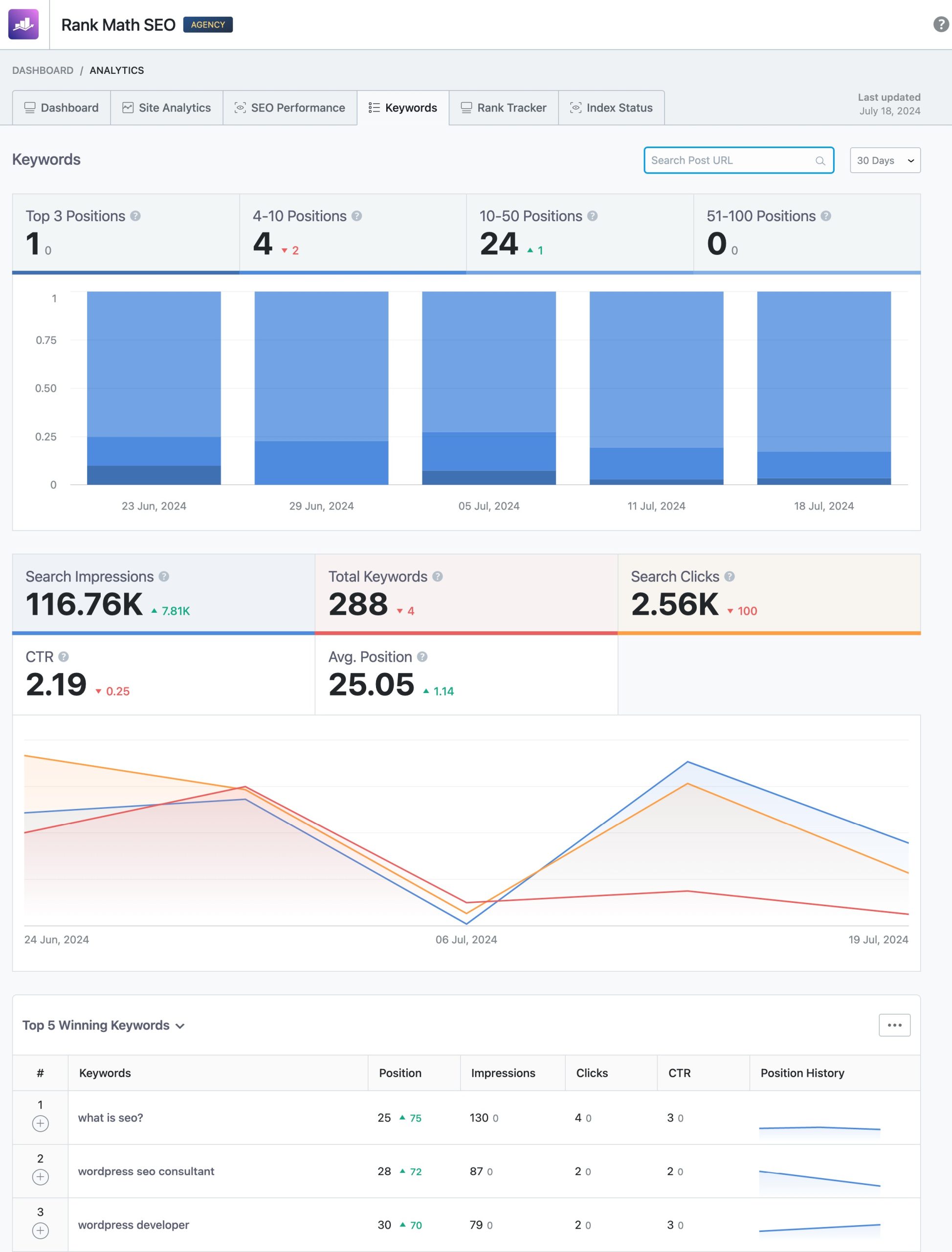
Evaluate the traffic data to see if these keywords are driving more visitors to your site and whether those visitors are engaging with your content.
Based on your reviews, be prepared to adjust your strategy. If certain keywords are not performing as well as expected, analyze why. It can be due to high competition, changes in search algorithms, or a mismatch between the keyword and your content.
3 Frequently Asked Questions
How do I analyze keyword gaps once I find them?
After identifying missing keywords, review their search volume, relevance to your business, and competition. Then prioritize keywords that are most likely to bring relevant traffic for content creation or optimization.
Can keyword gap analysis help with content planning?
Yes, it gives you a data-driven content roadmap by revealing what topics and search queries competitors already rank for, so you can plan new content or improve existing pages targeting those gaps.
What’s the difference between keyword gap and content gap analysis?
Keyword gap focuses specifically on missing keywords relative to competitors, while content gap analysis looks more broadly at missing topics, formats, or depth in your overall content strategy.
4 Conclusion
Keyword gap analysis is powerful for uncovering hidden opportunities and enhancing your SEO strategy.
By identifying the keywords your competitors rank for but you do not, you can fill those gaps with targeted content, improve your search engine rankings, and attract more organic traffic.
Implementing keyword gap analysis into your regular SEO practices helps ensure that your content remains relevant, comprehensive, and aligned with user intent.
Start integrating keyword gap analysis into your SEO efforts today to uncover missed opportunities and boost your success.
With dedication and the right approach, you can significantly boost your site’s performance and achieve your business goals.
If you like this post, let us know by Tweeting @rankmathseo.
